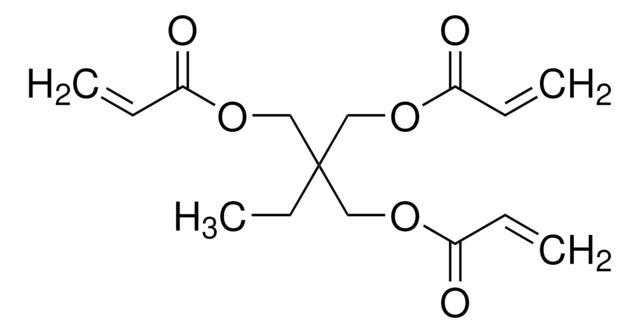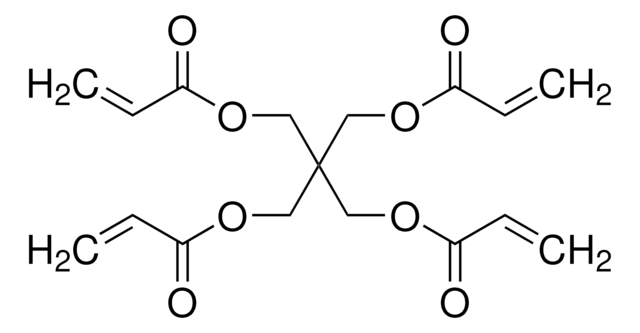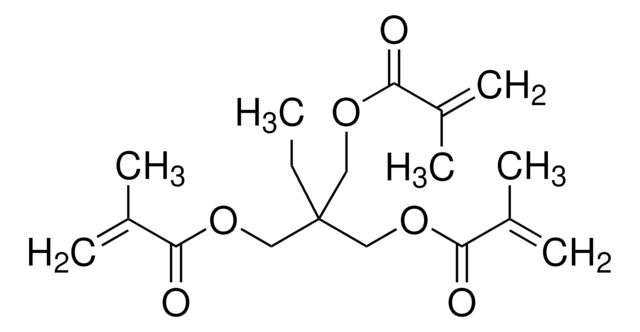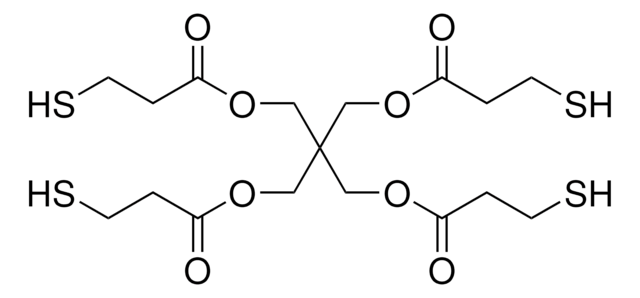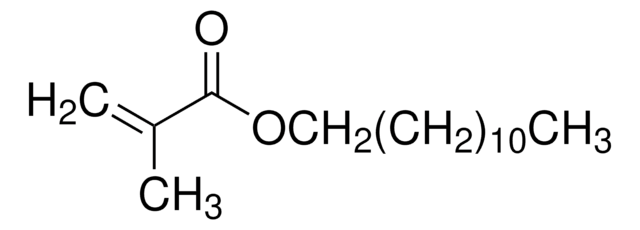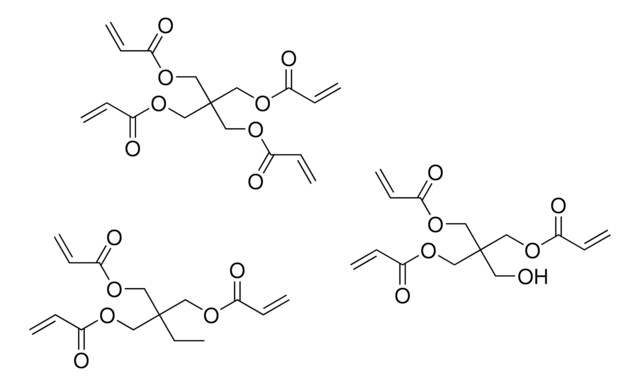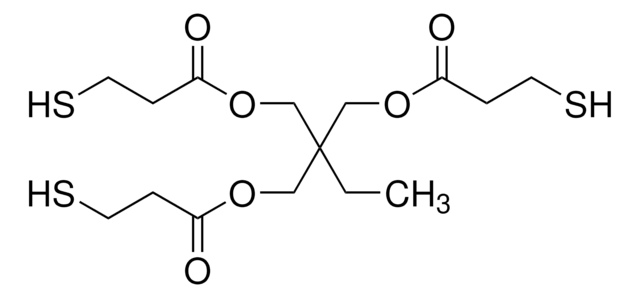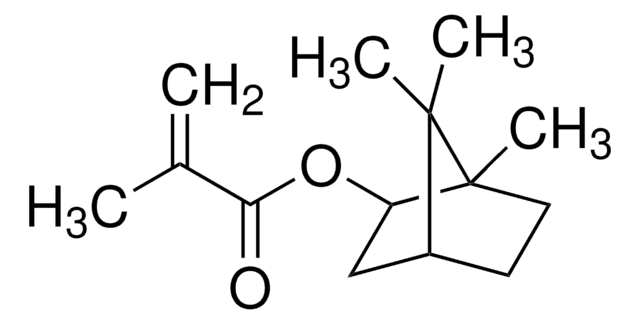246840
Trimethylolpropane trimethacrylate
contains 250 ppm monomethyl ether hydroquinone as inhibitor, technical grade
Sinónimos:
Acryester TMP, Blemmer PTT, PTMA, TMPTMA
About This Item
Productos recomendados
grade
technical grade
Quality Level
vapor density
>1 (vs air)
vapor pressure
<0.01 mmHg ( 20 °C)
contains
250 ppm monomethyl ether hydroquinone as inhibitor
refractive index
n20/D 1.472 (lit.)
density
1.06 g/mL at 25 °C (lit.)
SMILES string
CCC(COC(=O)C(C)=C)(COC(=O)C(C)=C)COC(=O)C(C)=C
InChI
1S/C18H26O6/c1-8-18(9-22-15(19)12(2)3,10-23-16(20)13(4)5)11-24-17(21)14(6)7/h2,4,6,8-11H2,1,3,5,7H3
InChI key
OKKRPWIIYQTPQF-UHFFFAOYSA-N
¿Está buscando productos similares? Visita Guía de comparación de productos
Categorías relacionadas
General description
Application
- Poly(hydroxyethyl methacrylate) (pHEMA) nanocomposites that are used in the dental industry.
- Silicone rubber with a reduced bleed-out ratio.
- Organic monolithic column by living/controlled free-radical polymerization. This column can be used as a stationary phase in capillary liquid chromatography.
- Macroporous poly (glycidyl methacrylate-co-trimethylolpropane trimethacrylate) materials with fine controlled porous properties.
Storage Class
10 - Combustible liquids
wgk_germany
WGK 2
Elija entre una de las versiones más recientes:
¿Ya tiene este producto?
Encuentre la documentación para los productos que ha comprado recientemente en la Biblioteca de documentos.
Los clientes también vieron
Nuestro equipo de científicos tiene experiencia en todas las áreas de investigación: Ciencias de la vida, Ciencia de los materiales, Síntesis química, Cromatografía, Analítica y muchas otras.
Póngase en contacto con el Servicio técnico